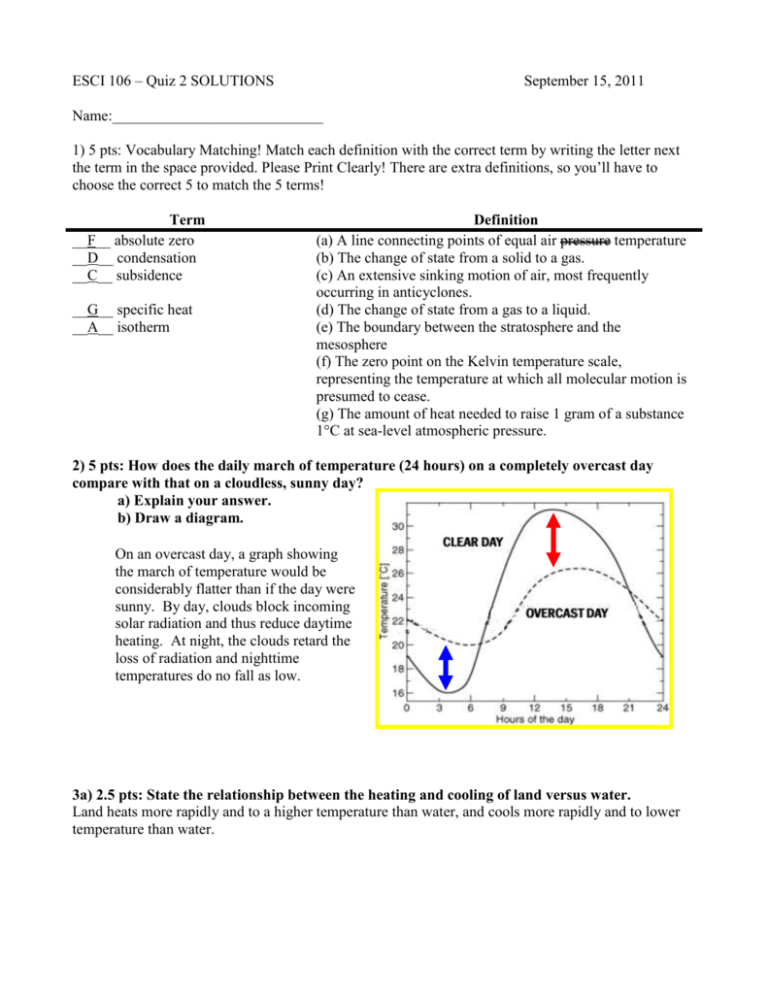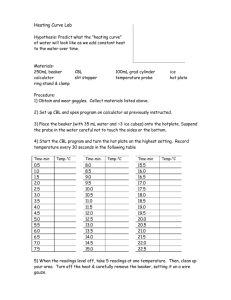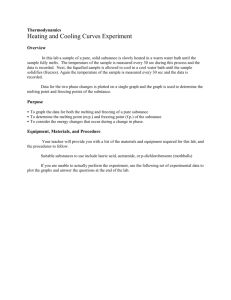EART 80C – Quiz 1
advertisement

ESCI 106 – Quiz 2 SOLUTIONS September 15, 2011 Name:____________________________ 1) 5 pts: Vocabulary Matching! Match each definition with the correct term by writing the letter next the term in the space provided. Please Print Clearly! There are extra definitions, so you’ll have to choose the correct 5 to match the 5 terms! Term __F__ absolute zero __D__ condensation __C__ subsidence __G__ specific heat __A__ isotherm Definition (a) A line connecting points of equal air pressure temperature (b) The change of state from a solid to a gas. (c) An extensive sinking motion of air, most frequently occurring in anticyclones. (d) The change of state from a gas to a liquid. (e) The boundary between the stratosphere and the mesosphere (f) The zero point on the Kelvin temperature scale, representing the temperature at which all molecular motion is presumed to cease. (g) The amount of heat needed to raise 1 gram of a substance 1°C at sea-level atmospheric pressure. 2) 5 pts: How does the daily march of temperature (24 hours) on a completely overcast day compare with that on a cloudless, sunny day? a) Explain your answer. b) Draw a diagram. On an overcast day, a graph showing the march of temperature would be considerably flatter than if the day were sunny. By day, clouds block incoming solar radiation and thus reduce daytime heating. At night, the clouds retard the loss of radiation and nighttime temperatures do no fall as low. 3a) 2.5 pts: State the relationship between the heating and cooling of land versus water. Land heats more rapidly and to a higher temperature than water, and cools more rapidly and to lower temperature than water. 3b) 2.5 pts: List and explain the factors that cause the difference between the heating and cooling of land and water. Reasons for the differential heating of land and water include the following: 1) water is a liquid and is mixed by waves and currents, while soil or rock are fixed; hence, heat is distributed through a larger thickness (mass) of water than land; 2) land is opaque, so all radiant energy is absorbed in a shallow surface layer, while water is more transparent, allowing solar radiation to penetrate to greater depths; 3) the specific heat of water is higher than the specific heat of land; and 4) evaporation is greater from a water surface than from a land surface. 4) 4 pts: List four ways instability can be enhanced. Instability can be enhanced by the following: 1) intense solar heating warming the lowermost layer of the atmosphere 2) the heating of an air mass from below as it passes over a warm surface 3) general upward movement of air caused by processes such as orographic lifting, frontal wedging, and convergence. 4) radiation cooling from cloud tops. 5) 6 pts: Describe the movement of water through the hydrologic cycle. a) Draw a diagram and label the different components. b) Make sure to include all FOUR terms mentioned in the book. Most water evaporates from the oceans Some of the water vapor is transported considerable distances, condenses to form clouds, and eventually falls to Earth’s surface as precipitation. Once precipitation has fallen on land, some if it re-enters the atmosphere by evaporation and transpiration, some soaks in, and some runs off. The water that soaks in or runs off eventually makes its way back to the ocean to again the cycle anew.











